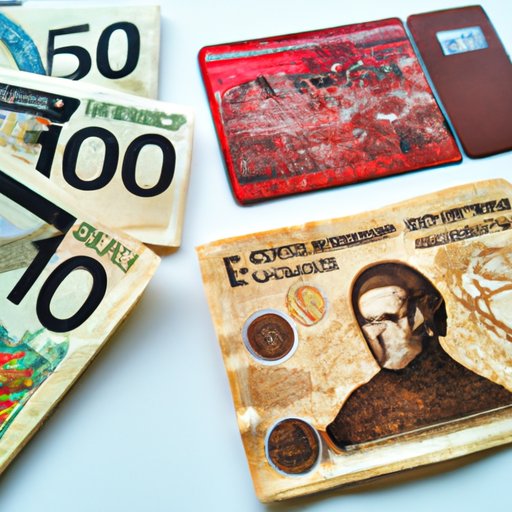
I. Introduction
When traveling to a foreign country, understanding the local currency becomes essential to navigate everyday life. For those living or visiting Canada, it is essential to get acquainted with Canadian currency and its different forms. With a rich history, cultural significance, and recent technological advancements, Canadian money is more than just a means of exchange; it is an expression of Canadian identity. This article aims to provide a comprehensive guide to Canadian currency, covering everything from its history to digital payments, and the economic impact it has on society.
II. A Guide to Canadian Currency
Canadian currency is divided into coins, commonly referred to as loonies and toonies, and banknotes, which come in five different denominations – $5, $10, $20, $50, and $100. Created in 1987, the loonie is a gold-colored coin with a loon depicted on one side and the queen on the other. The toonie, introduced in 1996, has a polar bear on one side and the queen on the other. When dealing with Canadian money, it is important to pay attention to the different denominations, sizes, and characteristics, as well as how to recognize and handle them. Practice caution when receiving or exchanging currency to avoid counterfeit bills or scams.
III. From Beavers to the Queen: The History of Canadian Money and Its Symbols
The use of currency in Canada dates back to the late 17th century when coins were first introduced by the French empire. Over time, Canada has seen a range of different denominations, designs, and symbols used on its currency. Some of the most recognizable symbols in Canadian currency are the beaver, the loon, and the Queen. The beaver has been featured on Canadian coins since 1858 and is considered a national symbol. The loonie gets its name from the depiction of a common loon on one side and was introduced to replace the dollar bill. The queen appears on all Canadian currency and is a symbolic figure representing Canada’s history with Great Britain.
IV. The Evolution of Canadian Currency
Canadian currency has undergone significant changes in the last few decades, involving both technological and design advancements. Banknote redesigns have led to improved security measures, including holographic strips, hidden numbers, and raised print. Coins have also evolved, with new materials and structures, such as a bimetallic composition used in the toonie to prevent counterfeiting. These changes in design and security measures have helped to make Canadian currency more user-friendly and secure for the general public.
V. Navigating Canada’s Cashless Society
Digital payments have revolutionized the way Canadians buy and sell. Credit and debit cards are a common method of payment, along with e-wallets and mobile payments, which allow for convenience and flexibility. Canadian banks and financial institutions offer various options for digital payments, making the transition to a cashless society smoother. However, users must be careful when using digital payments, taking measures to safeguard their accounts and avoid scams.
VI. The Cost of Currency
The production, distribution, and handling of currency have significant economic impacts. Eliminating low-value coins such as the penny or promoting cashless transactions could lower costs. Advocates argue that digital payments could save time and money for businesses and citizens. However, moving towards a cashless society could also create new costs and issues for those who are unbanked or underbanked, or who prefer cash payments due to cultural reasons.
VII. Money Matters: Exploring the Cultural Significance of Canadian Currency in Society
Money holds cultural significance in Canadian society, reflecting values and beliefs. For example, Canadian banknotes have recently featured inspiring women, such as Viola Desmond and the Famous Five, underscoring the importance of women in Canadian history. Money is used to support different cultural communities, causes, and events. Understanding the cultural significance of Canadian currency helps to gain a deeper appreciation for its role in Canadian society.
VIII. Conclusion
Currency is an essential part of daily life. By understanding Canadian currency, travelers, and citizens can navigate their everyday life with more ease, making informed choices about their financial transactions and history. From coins to digital payments, Canadian money reflects the history, culture, and values of Canada, and it is worth taking the time to explore its significance.




